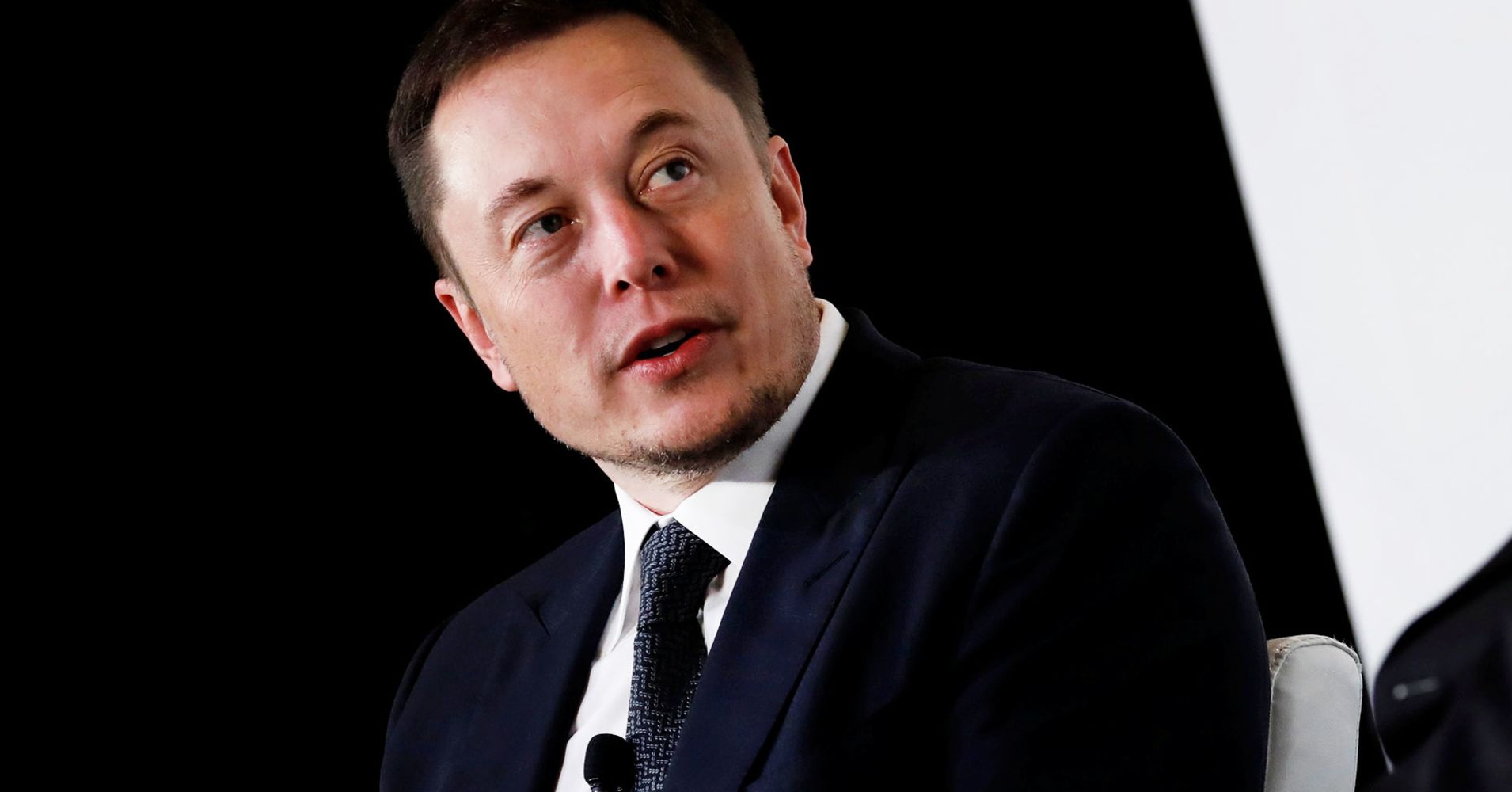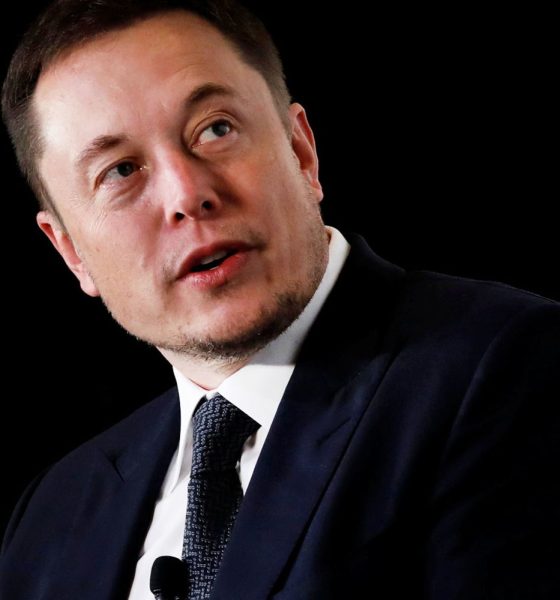

Investor's Corner
Tesla’s (TSLA) Elon Musk is currently the auto industry’s most tenured CEO
Tesla (NASDAQ:TSLA) might easily be considered as a young, upstart electric car maker, but the company is actually being led by the car industry’s most tenured CEO today. In what could only be described as a twist of fate and a stroke of irony, Elon Musk has become the longest-serving CEO in today’s auto segment, having taken Tesla’s chief executive seat back in 2008.
Musk emerged as the car industry’s longest-serving CEO in May, when then-Daimler CEO Dieter Zetsche, who had been serving as the German automaker’s chief executive since 2006, announced his retirement after 13 years on the job. And Zetsche was not the only one. The Renault-Nissan-Mitsubishi alliance also saw notable turnovers in the group’s CEO positions this year.
Back in January, Renault attracted headlines following veteran CEO Carlos Ghosn’s resignation over his alleged connection with a high-profile financial scandal. Last month, Mitsubishi, which maintains a notable presence in markets such as Southeast Asia, also announced the departure of its CEO, Osamu Masuko, who has been leading the company for the last five years. Even South Korean automaker Hyundai, which produces the practical and well-received Kona EV, saw some turnover in its executive positions earlier this year, with Chung Eui-sun being dubbed as co-CEO with Lee Won-hee, who also took over the chief executive post this year.
Following is a list of car company CEOs as well as their tenure as chief executive of their respective companies (H/T to Benzinga).
- Tesla: Elon Musk in 2008
- Toyota: Akio Toyoda, 2009
- General Motors (GM): Mary Barra, 2014
- Peugeot: Carlos Tavares, 2014
- Honda: Takahiro Hachigo, 2015
- BMW: Harald Krüger, 2015 (though he has recently confirmed that he will be stepping down as BMW’s CEO)
- Ford: Jim Hackett, 2017
- Nissan: Hiroto Saikawa, 2017
- Mazda: Akira Marumoto, 2018
- Volkswagen: Herbert Diess, 2018
- Fiat Chrysler: Michael Manley, 2018
- Suzuki: Toshihiro Suzuki, 2018
- Daimler: Ola Kaellenius, 2019
- Renault: Thierry Bolloré, 2019
- Mitsubishi: Takao Kato, 2019
Tesla gets a bad reputation at times for allegedly being a car company that cannot retain talent. Yet, together with Elon Musk, several of the electric car maker’s key executives have been with Tesla for long periods of time. Among these are CTO JB Straubel and Chief Designer Franz von Holzhausen, as well as President of Automotive Jerome Guillen, who joined Tesla back in 2010, before the first Model S rolled off the line. Other executives that recently rose through the ranks, such as CFO Zach Kirkhorn, have also been with the company since the days of the original Tesla Roadster.
It is evident from Tesla’s growing pains that Elon Musk is still learning the ropes as the company’s chief executive. This became evident during Tesla’s Model 3 production ramp, a “bet the company” strategy that Musk describes as one of the most arduous points in his career. These experiences ultimately give Musk a certain advantage over his fellow CEOs in the auto market, as it allows him to have a clear vision of Tesla’s strengths and weaknesses. This, in turn, enables him to roll out strategies that benefit the company in the long-term. An excellent example of this is Gigafactory 1 in Nevada, a substantial investment that was once deemed a folly by critics, but is turning out to be an act of remarkable foresight today.
Musk is recognized for being a disruptive visionary, and he really is. Nevertheless, it should be noted that the Tesla and SpaceX CEO also deserves some credit for being a leader that sticks with a company through every up and down. Part of this is likely due to the fact that he sincerely fights for Tesla and its mission of accelerating the advent of sustainable energy. Ultimately, this could very well be a big difference-maker for Tesla’s chances of survival and potential success.

Investor's Corner
Tesla stock closes at all-time high on heels of Robotaxi progress

Tesla stock (NASDAQ: TSLA) closed at an all-time high on Tuesday, jumping over 3 percent during the day and finishing at $489.88.
The price beats the previous record close, which was $479.86.
Shares have had a crazy year, dipping more than 40 percent from the start of the year. The stock then started to recover once again around late April, when its price started to climb back up from the low $200 level.
This week, Tesla started to climb toward its highest levels ever, as it was revealed on Sunday that the company was testing driverless Robotaxis in Austin. The spike in value pushed the company’s valuation to $1.63 trillion.
Tesla Robotaxi goes driverless as Musk confirms Safety Monitor removal testing
It is the seventh-most valuable company on the market currently, trailing Nvidia, Apple, Alphabet (Google), Microsoft, Amazon, and Meta.
Shares closed up $14.57 today, up over 3 percent.
The stock has gone through a lot this year, as previously mentioned. Shares tumbled in Q1 due to CEO Elon Musk’s involvement with the Department of Government Efficiency (DOGE), which pulled his attention away from his companies and left a major overhang on their valuations.
However, things started to rebound halfway through the year, and as the government started to phase out the $7,500 tax credit, demand spiked as consumers tried to take advantage of it.
Q3 deliveries were the highest in company history, and Tesla responded to the loss of the tax credit with the launch of the Model 3 and Model Y Standard.
Additionally, analysts have announced high expectations this week for the company on Wall Street as Robotaxi continues to be the focus. With autonomy within Tesla’s sights, things are moving in the direction of Robotaxi being a major catalyst for growth on the Street in the coming year.
Elon Musk
Tesla needs to come through on this one Robotaxi metric, analyst says
“We think the key focus from here will be how fast Tesla can scale driverless operations (including if Tesla’s approach to software/hardware allows it to scale significantly faster than competitors, as the company has argued), and on profitability.”

Tesla needs to come through on this one Robotaxi metric, Mark Delaney of Goldman Sachs says.
Tesla is in the process of rolling out its Robotaxi platform to areas outside of Austin and the California Bay Area. It has plans to launch in five additional cities, including Houston, Dallas, Miami, Las Vegas, and Phoenix.
However, the company’s expansion is not what the focus needs to be, according to Delaney. It’s the speed of deployment.
The analyst said:
“We think the key focus from here will be how fast Tesla can scale driverless operations (including if Tesla’s approach to software/hardware allows it to scale significantly faster than competitors, as the company has argued), and on profitability.”
Profitability will come as the Robotaxi fleet expands. Making that money will be dependent on when Tesla can initiate rides in more areas, giving more customers access to the program.
There are some additional things that the company needs to make happen ahead of the major Robotaxi expansion, one of those things is launching driverless rides in Austin, the first city in which it launched the program.
This week, Tesla started testing driverless Robotaxi rides in Austin, as two different Model Y units were spotted with no occupants, a huge step in the company’s plans for the ride-sharing platform.
Tesla Robotaxi goes driverless as Musk confirms Safety Monitor removal testing
CEO Elon Musk has been hoping to remove Safety Monitors from Robotaxis in Austin for several months, first mentioning the plan to have them out by the end of 2025 in September. He confirmed on Sunday that Tesla had officially removed vehicle occupants and started testing truly unsupervised rides.
Although Safety Monitors in Austin have been sitting in the passenger’s seat, they have still had the ability to override things in case of an emergency. After all, the ultimate goal was safety and avoiding any accidents or injuries.
Goldman Sachs reiterated its ‘Neutral’ rating and its $400 price target. Delaney said, “Tesla is making progress with its autonomous technology,” and recent developments make it evident that this is true.
Investor's Corner
Tesla gets bold Robotaxi prediction from Wall Street firm
Last week, Andrew Percoco took over Tesla analysis for Morgan Stanley from Adam Jonas, who covered the stock for years. Percoco seems to be less optimistic and bullish on Tesla shares, while still being fair and balanced in his analysis.

Tesla (NASDAQ: TSLA) received a bold Robotaxi prediction from Morgan Stanley, which anticipates a dramatic increase in the size of the company’s autonomous ride-hailing suite in the coming years.
Last week, Andrew Percoco took over Tesla analysis for Morgan Stanley from Adam Jonas, who covered the stock for years. Percoco seems to be less optimistic and bullish on Tesla shares, while still being fair and balanced in his analysis.
Percoco dug into the Robotaxi fleet and its expansion in the coming years in his latest note, released on Tuesday. The firm expects Tesla to increase the Robotaxi fleet size to 1,000 vehicles in 2026. However, that’s small-scale compared to what they expect from Tesla in a decade.
Tesla expands Robotaxi app access once again, this time on a global scale
By 2035, Morgan Stanley believes there will be one million Robotaxis on the road across multiple cities, a major jump and a considerable fleet size. We assume this means the fleet of vehicles Tesla will operate internally, and not including passenger-owned vehicles that could be added through software updates.
He also listed three specific catalysts that investors should pay attention to, as these will represent the company being on track to achieve its Robotaxi dreams:
- Opening Robotaxi to the public without a Safety Monitor. Timing is unclear, but it appears that Tesla is getting closer by the day.
- Improvement in safety metrics without the Safety Monitor. Tesla’s ability to improve its safety metrics as it scales miles driven without the Safety Monitor is imperative as it looks to scale in new states and cities in 2026.
- Cybercab start of production, targeted for April 2026. Tesla’s Cybercab is a purpose-built vehicle (no steering wheel or pedals, only two seats) that is expected to be produced through its state-of-the-art unboxed manufacturing process, offering further cost reductions and thus accelerating adoption over time.
Robotaxi stands to be one of Tesla’s most significant revenue contributors, especially as the company plans to continue expanding its ride-hailing service across the world in the coming years.
Its current deployment strategy is controlled and conservative to avoid any drastic and potentially program-ruining incidents.
So far, the program, which is active in Austin and the California Bay Area, has been widely successful.








